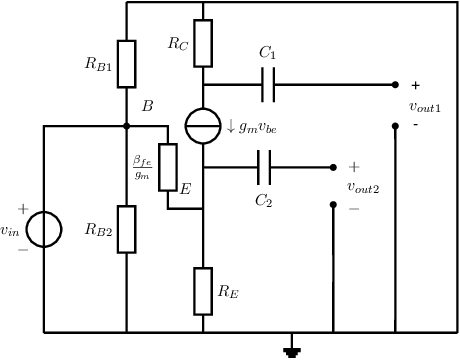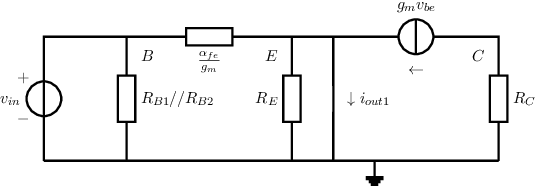An answer:
As a first guess, let’s neglect the base current, derive the value for
for that assumption and after that determine whether this assumption was valid. From the exercise we
can readily get a number of currents and voltages:
Neglecting base current may be valid but this must be checked. ONLY if the base current is much smaller than the current in the assumption was/is valid.
As is not much smaller than , the base current cannot be ignored. Therefore a more elaborate derivation much be done taking the impact of into account!
An answer:
There is (negative) feedback that serves to stabilize the bias settings. This can conveniently be
explained using a type of flow diagram:
whereby the indicates an increase and the indicates a decrease in value.
An answer:
An answer:


An answer:
An answer:
An answer:
The (unloaded) output voltage
due to
is:
The next step is to calculate the short circuit output current due to - for this we need a new small signal equivalent circuit:

Note that for this SSEC, because appears shorted
An answer:
Reusing a previous equation for can shorten the derivation (only) a little. This leads to